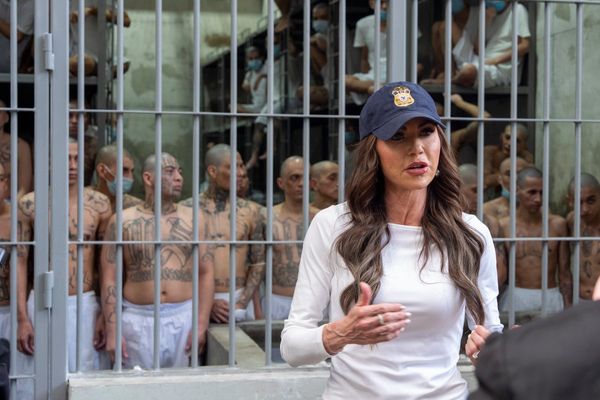
Photograph: David Parry/PA
Conserved at the London Archives since 2005, rukus! is a collection of printed materials, conference agendas and ephemera related to the Black LGBTQ+ community in Britain. It was not intended to be a static academic resource, sifted through with white gloves, but to be continually activated and imagined in relation to the present. In this new show by rukus! Federation co-founder and film-maker Topher Campbell at Somerset House in London, these incredible materials are configured through themes of love, community, friendship and resistance, tracing the latest evolution of thinking around the culture and contours of Black LGBTQ+ life.
The rukus! Federation charity launched in 2000, following a series of conversations between Campbell and the artist Ajamu X, after a friend who died left him a collection of dolls and erotic magazines. Since then, the collective has been responsible for events, films and archival production. The strength of the rukus! collection is testament to the community that has held on to old, invaluable things for posterity, and here Campbell’s skilful curation has transformed the items into something rousing, emotional and celebratory.
The show is split into four rooms, the first two bathed in a soft pink light creating a sense of play and intimacy. Much of the rukus! collection is displayed on metal gridwalls, riffing on cruising and the idea of scaling fences in order to enter forbidden grounds. A screen plays Campbell’s first film, The Homecoming: A Short Film About Ajamu, which sets the tough, urban reputation of Brixton against the camp and delightful excursions of the artist.
The idea of friendship and the ways in which it unlocks creative practice takes centre stage in this show. When you enter, there’s a large print of Campbell and Ajamu, and throughout the show are images of friends and ex-lovers. And there is so much sex: images of leather-clad, nude black men on gelatin silver print; an S&M “slave’s contract”; and an Attitude magazine story in which Topher and his ex-husband describe their trysts in a Starbucks toilet. Such a willingness to put personal desire on display feels revelatory.
The show traces the many institutional challenges to its attempts to assert the plurality of Black LGBTQ+ life. In 2006, rukus! launched The Fire This Time, a riff on James Baldwin’s 1963 essay collection, in an attempt to “queer” Black History Month, but they were met with resistance. On a gridwall hang flyers for a related conference, meeting notes planning the month’s events, and a rebuke in pan-Afrikan newspaper The Whirlwind, which writes of the “the battle for the soul of black history month” against “degenerative drivel”. Even where local authorities agreed to fund events by the rukus! collective, promotional imagery was not allowed to include their logo – a drawing by African-American cartoonist Belasco of a muscular man with thigh-high boots and an erection. Not to worry, though, it’s been rendered enormous on the wall at Somerset House.
The show’s “in memoriam” section is its emotional centre: the devastation of Aids haunts any assemblage of queer history, but the deaths in this community have not only been down to the disease. There is a notice of the death of pioneering DJ Chris McKoy, who drowned in a canal in Amsterdam in 2001, and of Simon Alcide, who was murdered in 1993. A letter to Simon by Ajamu reads: “I don’t know where gay men go when they leave here, but I do know that wherever you are, you’re up to no good.” Some of the writing is so raw and moving, so it’s a shame that sometimes it is too high up to read. A memorial book sits below, inviting guests to write eulogies – speaking to the cultural theorist Stuart Hall’s belief that Black archives like this must be alive and shaped by their interactions.
An installation by Evan Ifekoya evoking a nightclub feels underdeveloped, though its mirrored dancefloor captures the illusion of space you get in cramped nightclubs, while flyers for Black LGBTQ+ raves celebrating everything from lesbian beauty-pageant finals to Obama’s 2009 inauguration gives a sense of their scope. Campbell’s closing room installation riffing on Michael McMillan’s re-creation of a 1970s West Indian front room is more successful, with a floral couch on which you can watch an event commemorating the inaugural Black Gay Men’s conference of 1987. On the wall hangs a photo of a bookshelf, featuring a blurred family portrait, and a large black dildo. It’s a powerful reclamation of the disruption of the nuclear family that Black LGBTQ+ people have been charged with by social conservatives, thrown back at them with cheek, humour and without apology.







